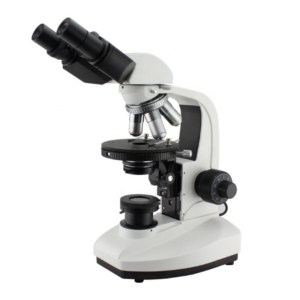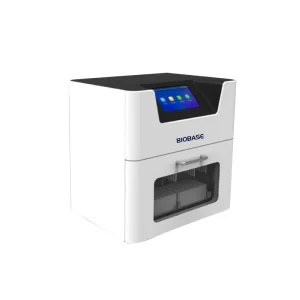$1,134.00
A tissue slide dryer is an essential piece of equipment in histology, cytology, and pathology labs. Its primary function is to quickly and uniformly dry tissue sections on microscope slides after they have been processed and prior to staining.

Conduct Science is a premier manufacturer of research infrastructure, born from a mission to standardize the laboratory ecosystem. We combine industrial-grade precision with a scientist-led tech-transfer model, ensuring that every instrument we build solves a real-world experimental challenge. We replace "home-brew" setups with validated tools ranging from microsurgical suites to pathology systems. With a track record of >1,600 institutional partners and hundreds of citations, our equipment is engineered to minimize human error. We help you secure more data for less of your budget, delivering the reliability required for high-impact publication.

bool(false)

bool(false)

The Tissue Slide Dryer is a specialized laboratory instrument designed for the efficient and safe drying of tissue sections mounted on glass slides. It features an intuitive LCD touch screen for user-friendly operation and offers a fully programmable on/off control, allowing for automated start and stop times. The device is built with a computer-controlled heating system for quick and precise temperature management, ensuring that tissue is not damaged during the drying process. The RF-RD-81 is equipped with a triple temperature control protection system to prevent overheating and has an automatic memory function that retains preset temperature data.
Parameter | Value |
Model | RF-RD-81 |
Display | LCD Touch screen |
Product Size | L327mm x W340mm x H166mm |
Temperature Range | 0°C to 70°C |
Temperature Precision | ±1°C |
Capacity | 63 slides |
Voltage & Frequency | AC220V±10% - 50Hz±1Hz |
A tissue slide dryer is an essential piece of equipment in histology, cytology, and pathology labs. Its primary function is to quickly and uniformly dry tissue sections on microscope slides after they have been processed and prior to staining. This process is critical for ensuring proper adhesion of the tissue to the slide, preventing the formation of artifacts, and preparing the sample for subsequent procedures like staining and microscopic examination. The controlled heating surface of the dryer ensures that moisture is evaporated gently and evenly, which is crucial for maintaining the integrity of delicate tissue samples.

In the field of histopathology, the proper preparation of tissue samples is paramount for accurate diagnosis. After tissue is sectioned, it must be mounted and dried to ensure it remains securely attached to the glass slide throughout the staining and analysis process. The use of a dedicated tissue slide dryer, such as the Roundfin RD-81, provides a controlled, efficient, and consistent method for this step, eliminating the variables associated with traditional air-drying methods. This device streamlines the laboratory workflow and enhances the quality and reliability of prepared slides.
Microprocessor Control: The dryer uses a microprocessor to maintain a stable and accurate temperature, with a precision of ±1°C.
Programmable Operation: Users can set specific on/off times, allowing for automated preparation and workflow optimization.
Safety Features: It includes three levels of temperature protection to prevent overheating and ensure the safety of both the equipment and the tissue samples.
Corrosion-Resistant Surface: The heating plate is made from a special black material that is resistant to abrasion and corrosion, ensuring durability.
Digital Display: A clear, high-definition color LCD screen displays real-time and preset temperatures, as well as timing information.
The primary components of a tissue slide dryer typically include:
Heating Plate: The main surface where the slides are placed for drying.
Control Unit: An integrated system with a microprocessor, display, and buttons or a touch screen for setting parameters.
Temperature Sensor: A sensor embedded in the heating plate to monitor and regulate the temperature.
Power Supply: The internal components that convert incoming AC power to the required voltage and current.
Buzzer/Alarm: A notification system to alert the user when the set drying time has elapsed.
Casing: The external body of the device, often made of durable, easy-to-clean materials.
Consistent and Uniform Drying: Ensures even drying across all slides, preventing distortions and artifacts.
Time and Cost Efficiency: Accelerates the drying process, reducing turnaround times in high-volume labs.
Enhanced Sample Preservation: Minimizes the risk of fungal or bacterial growth by quickly removing moisture.
Improved Workflow: Automation features like programmable on/off and memory functions streamline daily tasks.
High-Quality Results: Helps consistently produce well-dried slides, which is crucial for accurate microscopic analysis.
Upfront Cost: Can be a significant initial investment for small laboratories or those with limited budgets.
Dependence on Power: Requires a stable power source; power outages can interrupt the drying process.
Limited Flexibility: While versatile, they are designed for a specific task and may not be suitable for other lab functions.
Size and Capacity: The capacity is fixed (e.g., 63 slides), which might be a limitation for labs with extremely high throughput that would require multiple units.
Hamilton, P. W., et al. (2014). Digital pathology and image analysis in tissue biomarker research. Journal of Pathology Informatics, 5(1), 19. Digital pathology and image analysis in tissue biomarker research
University of South Carolina. (n.d.). IRF Histology Manual For Protocols. University of South Carolina. Retrieved from http://bit.ly/3X4iJgY
| Weight | 17.637 lbs |
|---|---|
| Dimensions | 635 × 203 × 76 cm |
There are no questions yet. Be the first to ask a question about this product.